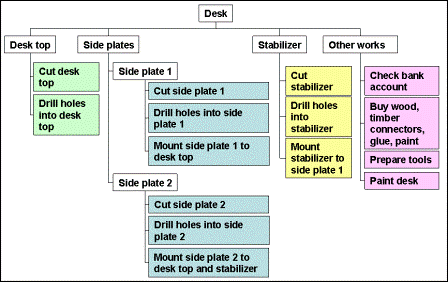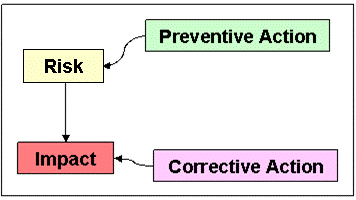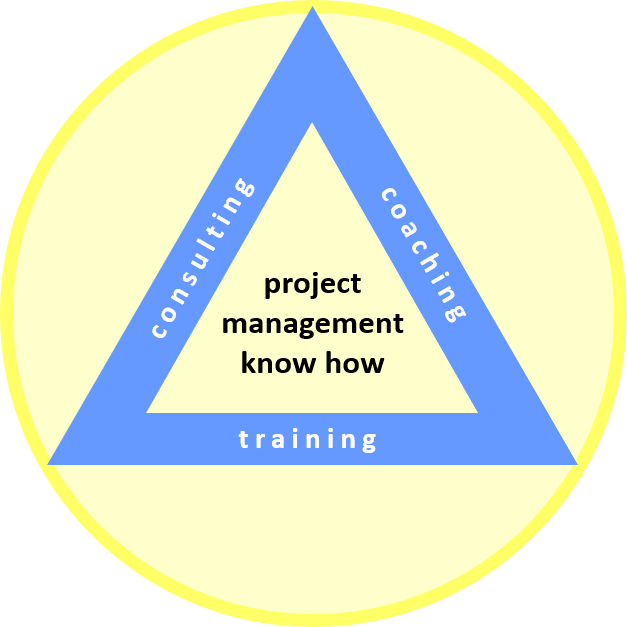3E RISK MANAGEMENT
Lesson 3
3e Risk Management
You are on page 5 of 5 pages
Risk Management
After preparing project scope, schedule, and budget (in form of a
cost plan) we remember lesson 1c Project Life Cycle. There we noted that
major reasons for cost overrun of many projects are changes we need to
manage during implementation phase. This means that our project plans
might be very detailed, yet we cannot really plan for all eventualities.
There will always be the risk of necessary changes. In this lesson, 3e
risk management, we introduce the basic concept for managing risks.
How do we define the term "risk"?
|
Based on our daily life language, a risk is |
(1) Risk identification
With this definition in the back of our mind we start with identifying risks for our project. Usually, we do this together with all our project team members.
Let us go back to the example of the new desk. Here is the WBS.

Which risks can we identify for that project?
- wood plates not available
- the saw blade breaks
- the drill bit breaks
- etc.
Based on this list of risks we continue with the next step.
(2) Risk analysis
For each risk we can estimate the probability of its occurance and its impact on the project.
In the example of the "desk project" we estimate both, probability (p)
and impact (i) of each risk with reference to a scale like very low -
low - medium - high - very high (1-2-3-4-5) and could obtain the
following:
- wood plates not available: p = 2, i = 5 (impact: delay of 3 working days)
- the saw blade breaks: p = 1, i = 3 (impact: delay of 1 working day and we need to buy a new saw blade)
- the drill bit breaks: p = 2, i = 3 (impact: delay of 1 working day and we need to buy a new drill bit)
- etc.
Multiplying probability and impact for each risk, p * i, helps us to prioritize the risks:
- wood plates not available: priority = 10
- the saw blade breaks: priority = 3
- the drill bit breaks: priority = 6
- etc.
In the next step, we turn to the question what we can do about each risk, following the principle of risk management.

(3) Plan preventive or corrective actions
Identifying preventive or corrective actions implies that we have
to integrate additional work into the WBS or affected work packages.
For the "desk project" we could come up with (starting with the highest priority):
- wood plates not available (priority = 10), preventive action: call different hardware stores for availability of wood plates.
- the drill bit breaks (priority = 6), preventive action: buy 2 spare drill bits.
- the saw blade breaks (priority = 3) preventive action: buy 1 spare saw blade.
- etc.
Before integrating each action into the WBS, schedule and cost plan we need to decide if it reduces probability and/or impact of its corresponding risk far enough to justify the additional cost of action. Thus, we have to estimate the cost of each action as well.
Identifying risks, analyzing them, planning preventive or
corrective actions and integrating all this into WBS, schedule and cost
plan concludes the planning phase.
(This lesson, 3e risk management, is not the only one where we
cover this topic. In lesson 4c Change Control, we will come back to it.)
Return from 3e Risk Management to Home Page
|
|
|

Your Comments
Have your say about what you just read! Leave me a comment in the box below.